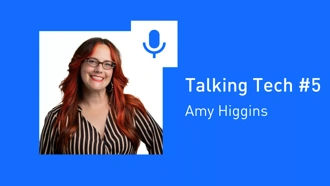What is a customer journey map?
Customer journey maps are visual representations of the different experiences customers can go through with a brand. It shows the common actions they take, thoughts they have, questions they may ask, and emotions they may feel — as well as how they change at each stage.
Customer experience (CX) and user experience (UX) teams often utilize customer journey maps to help steer them towards designing better products, processes, and digital experiences for their audiences. But, customer journey maps can be a useful tool for content and marketing professionals too.
They can help to better inform your marketing strategy and personalization efforts; giving you a clearer understanding of who your customers are and how you can serve them best.
Why is mapping the customer journey important?
Understanding the customer journey is hugely valuable for brands. It gives you an in-depth understanding of both potential and engaged customers, enabling you to deliver targeted communications based on buyer behaviors and preferences. This ultimately helps you convert more leads and increase overall customer satisfaction, forming an integral part of your customer loyalty and retention strategy.
How do you create a customer journey map?
Like your customers and the wider digital ecosystem, the customer journey is constantly evolving. Once you’ve mapped out your customer journey, it should be revisited regularly to make sure it’s still relevant and up-to-date. Your website analytics, social media engagement metrics, customer feedback, and other marketing automation tools can help with this.
Decide on your objectives: Like all marketing activities, it’s vital to begin with a clear idea of your goals. Ask yourself what you want to achieve and why. Which customer journeys are you mapping and will the approaches differ? What will you do with the information once you have it?
Consider your customer personas: If you haven’t already, now is the time to create customer personas, i.e. semi-fictionalized descriptions of your typical user or customer. Think about the different characteristics of your buyers and what leads them to you. Where and how they find you, what captures their interest, which content encourages them to find out more, and why.
Think about the entire customer experience they have with your brand and why it works (and doesn’t). You can use the marketing data mentioned above, or you can also get anecdotal insights by speaking directly to customers.
List all the touchpoints in your customer journey: Make a list of all the touchpoints, both direct and indirect, that your customers have with your brand. They might not follow what you think is a linear or expected order, so use your personas to explore the different routes to make sure you cover everything.
Consider the more obvious touchpoints such as contacting your customer service department or opening an email, but don’t forget the less immediately tangible ones such as third-party review sites or brand mentions in an industry publication.
When you’re considering each touchpoint, think about the different opportunities within them. Contacting customer service, for example, could involve interacting with a chatbot, an email chain, or speaking to an agent on the phone.
Map your customer personas to different touchpoints: This is perhaps the most tricky part. Focus on one persona at a time, guiding your customer through every potential touchpoint in their customer journey. Make sure to take time to imagine and empathize with every emotion, challenge, obstacle, action, or behavior they may experience.
Put yourself in their shoes: try walking through their day as if you were them; from the morning when they realize they need 'x' product to solve 'x' problem, to the evening when they’ve done all their research, checked the review sites, watched the how-to videos, spoken to a sales rep, and finally made the desired choice.



